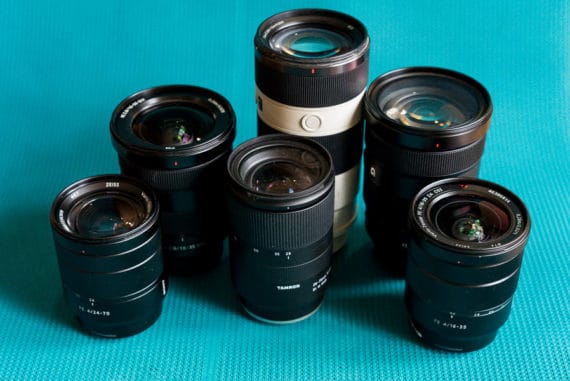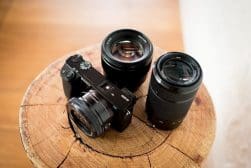
Sigma 28-70mm f/2.8 DG DN Review for Sony E-Mount Cameras
It's super small and lightweight for its focal range, but how does the Sigma 28-70mm f/2.8 DG DN perform? Read our review to find out.
The Sigma 28-70mm f/2.8 is a basic all-around performer. Touted as the world’s smallest 28-70mm f/2.8 lens, you know it’s going to be lightweight and compact.
Beyond that, it’s not a particularly spectacular lens in any one thing but does many things very nicely. Many modern lenses are great overall performers and this is no exception.

Great value lens that's small, lightweight and a good all-around performer.
The compact size is definitely noteworthy. I’ve used a lot of 24-70mm focal length lenses and they’re always too bulky for me. However, starting at 28mm instead of 24mm is a sacrifice as it means you have to trade weight for 4mm of focal range.
Some will argue but I think the difference between 24mm and 28mm is noticeable.
This lens is for anyone who shoots fast-moving subjects, wants the flexibility of a zoom lens, and is willing to trade focal length for size. Read on to check out my Sigma 28-70 f/2.8 DG DN review.
Sigma 28-70mm f/2.8 DG DN Review Specs
- Very compact/lightweight
- Inexpensive
- Flexible focal range
- Good ergonomics
- Good overall quality
- Limited wide focal range (28mm not 24mm)
- Optical quality
- Vignetting at low apertures
- Sony E-Mount/Full Frame Lens
- Aperture Range: f/2.8 – f/22
- Minimum Focus Distance: 7.5″ / 19 cm
- Weight: 16.6 oz / 470 g
- Length: 4″ / 101 mm
- Diameter: 2.8″ / 72 mm
- Filter size: 67 mm
- Image Stabilization: None
- Focus Type: Autofocus
- Optical Design: 16 elements in 12 Groups
- Maximum magnification ratio: 1:4.6
Build & Ergonomics
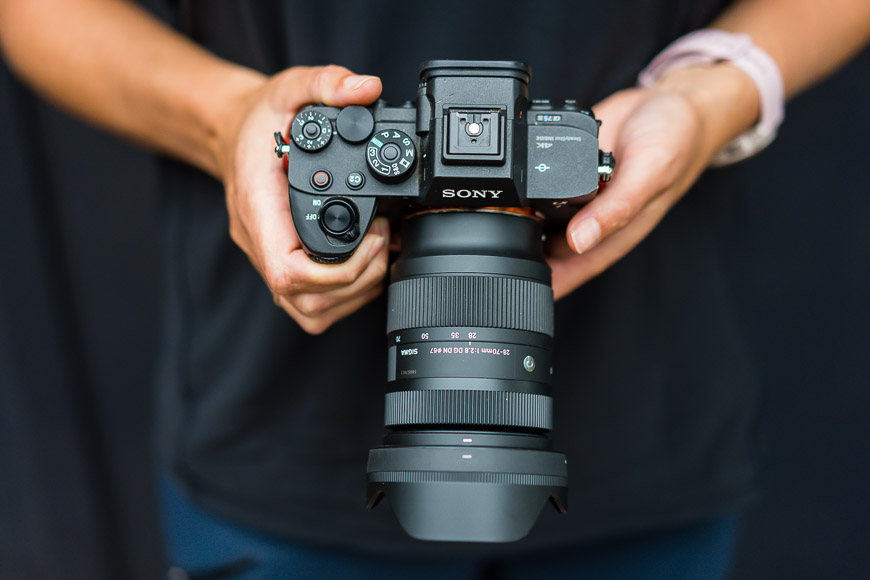
Sony A7S III with Sigma 28-70mm f/2.8 DG DN lens
The Sigma 28-70mm f/2.8 claims to be the “world’s smallest” 28-70, but in reality, Tamron is nearly identical and includes 28-75mm giving it a slightly better range.
That said, the handling of the Sigma is good – much better than the Tamron 28-75.
The build quality is also good. It is plastic, a budget-friendly lens, so just don’t drop it.
It does have a metal mount. The body and lens mount are not weather sealed which is something to be aware of as well. Usually, this doesn’t concern me – you just have to be careful not to get water in the lens mount where it touches the camera body since that’s where it’s most likely to be harmful.
In general, I like durable gear that I don’t have to worry about breaking or about it slowing me down. However, I also like budget-friendly and compact gear so it’s just about weighing the variables when I can’t have it all.
The manual focus ring and zoom ring feel firm on the Sigma 28-70mm f/2.8. There’s no need for a lock switch: the lens barrel won’t slide open when hanging from a camera strap.
It’s nice to not have to worry about the barrel extending when you don’t intend it to, such as while it’s simply hanging around your neck.
Even without a lot of the external lens features, the modern Sony bodies have custom buttons that can be programmed in-camera to do things like direct manual focus.
Additionally, in order to achieve a lightweight lens ranking, it’s a clean and simple design with just an auto/manual focus switch. There’s no stabilization, focus hold button, variable aperture ring, etcetera – features more often present on more expensive Sony lenses.
This lens is bare bones for the focal length range and balances nicely on the 650g A7 IV Sony camera. Compared with the Sigma Art lens I once used, this is a feather!
Lastly, this lens also comes with a nice lens hood that protects the front element.
Focus Performance

Sony A7 IV + Sigma 28-70mm f/2.8 DG DN | 1/1600 f/4 ISO 100
The focus performance of the Sigma 28-70mm f/2.8 is good. It’s snappy, accurate, smooth, and tracks well.
You will want something faster than f/2.8 in really dark situations but for shooting outside during daylight, I found the focus performance to be solid.
Overall the focus is better than Tamron and as good as a Sigma 24-70mm standard zoom lens. If you want a lightweight standard zoom lens, this is a great option.
Essentially I didn’t have any issues or concerns when it came to focusing – advances in technology are making this section of my reviews short and sweet. I don’t long for the days when I had to worry about finding focus.
With this lens, you will notice a minimal amount of focus breathing, but that’s common to many lenses. Some modern Sony cameras with Sony lenses can compensate for this but it isn’t available for this lens.
Image Quality
When it comes to image quality, you do make some sacrifices and compromises with the Sigma 28-70mm f/2.8.
A compact lens that is lightweight and less expensive means loss in corner sharpness and some sub-optimal characteristics. I would say that the sharpness is adequate for portraits but that it’s not so sharp for landscapes and the like where you want guaranteed full frame corner sharpness.
Bokeh is ok, about as good as you would expect from a zoom lens with rounded aperture blades. That is to say that it’s not as beautiful and round as a good prime lens and can result in some oblong shapes.
If you really want beautiful bokeh you should look at an f/1.8 maximum aperture or lower prime lenses with a longer focal length like 85mm.
The maximum aperture of f/2.8 on this lens is good but not exceptional for low-light situations.
The lens also creates some vignetting on the wide end which, while correctable for photos, is not correctable for video.
Sometimes the vignetting is nice so you can just embrace it. However, when my intention is a nice clean sky across the top of the image, the vignette can be distracting and a frustrating thing to not be able to control.
The Sigma 28-70mm f/2.8 creates some barrel distortion but that’s often correctable for photos. As with vignetting, the barrel distortion isn’t correctable in video – but in this case, I feel like it’s not as noticeable because the picture is moving anyway. It is less evident at the telephoto end of the zoom range.
Ghosting and chromatic aberrations are pretty well controlled, and it seems like the optical construction of this lens is high quality – something you should expect in a Sigma lens.
The chromatic aberrations are especially well controlled at the wide end and I don’t expect anyone except the most aggressive pixel peepers to have concerns.
Based on a lack of crispness when shooting into the sun and less than beautiful lens flare, this is not the best lens for shooting backlit or into the sun. I do love beautiful backlight and so it’s helpful to understand the limitations of my gear and know this lens won’t create the effect I’m looking for.
Overall, the image quality isn’t where this lens excels and there’s nothing to wow me. The question is more whether I can live with the modest compromises and sacrifices.
I have my favorite lenses for bokeh or lens flare, and most other lenses including this one won’t stand a chance. However, that doesn’t mean the quality isn’t sufficient for other circumstances.
As I’ll discuss below, this lens is really about making the best combination of price and quality. If you simply wanted to have the best full-stop, I’d shy away from third-party lenses and go with the native Sony lenses. But of course, almost everyone must consider price and value when it comes to camera gear.
With that in mind, this DN contemporary lens is very nice.
Sigma 28-70mm f/2.8 DG DN Sample Images
Here are some sample images taken with the Sigma 28-70mm f/2.8 DG DN, using a Sony A7 IV.
Raw images were processed lightly and exported for web resolution. In-camera jpg images also look great but I prefer the flexibility of raw files.
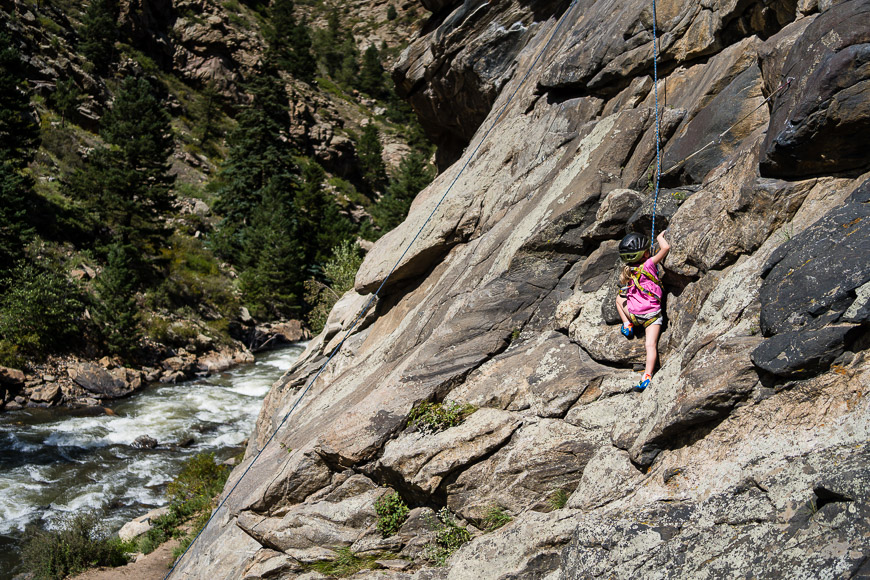
Sony A7 IV + Sigma 28-70mm f/2.8 DG DN | 1/4000 f/2.8 ISO 100
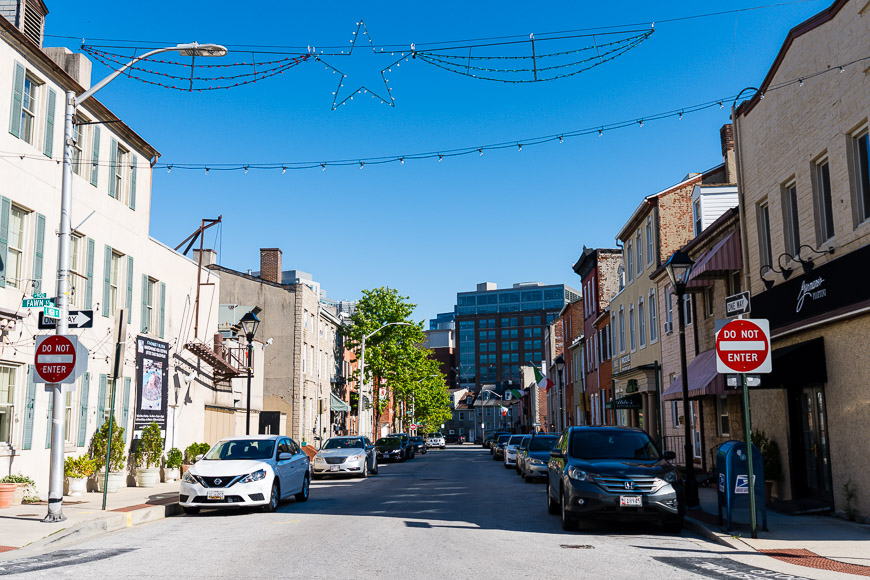
Sony A7 IV + Sigma 28-70mm f/2.8 DG DN | 1/2500 f/2.8 ISO 200
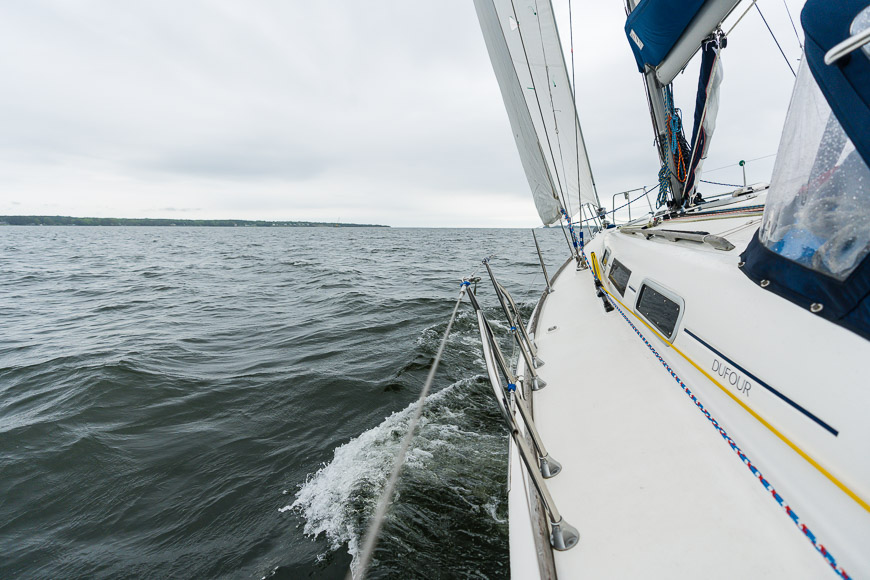
Sony A7 IV + Sigma 28-70mm f/2.8 DG DN | 1/3200 f/2.8 ISO 400
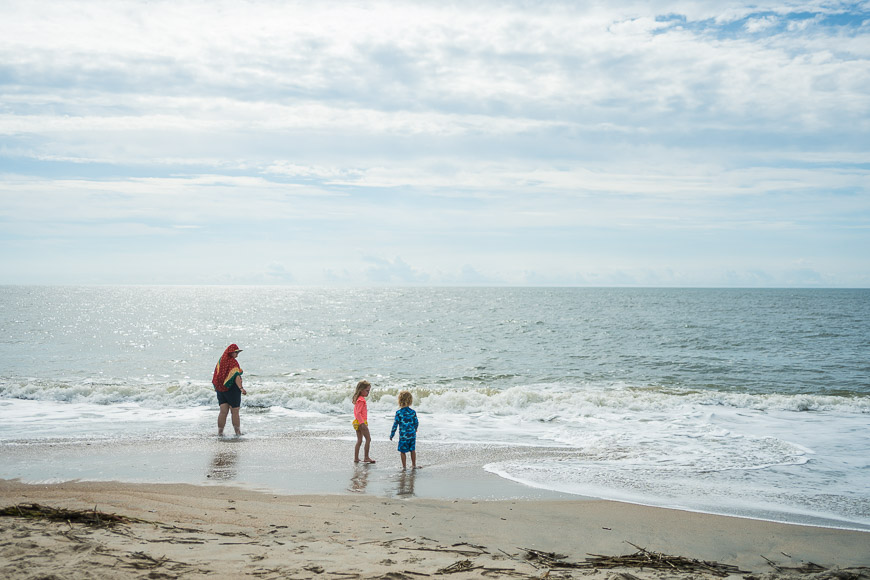
Sony A7 IV + Sigma 28-70mm f/2.8 DG DN | 1/1000 f/2.8 ISO 100
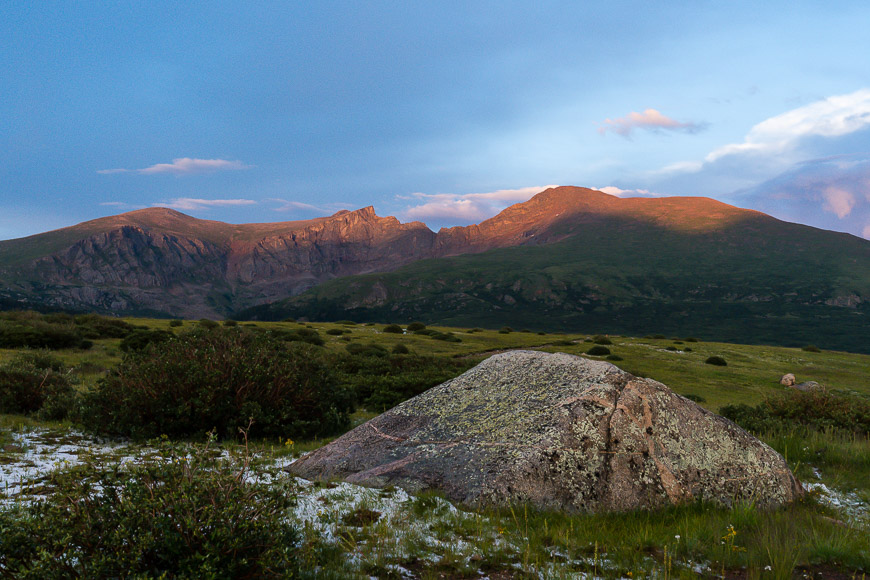
Sony A7 IV + Sigma 28-70mm f/2.8 DG DN | 1/40 f/10 ISO 1250
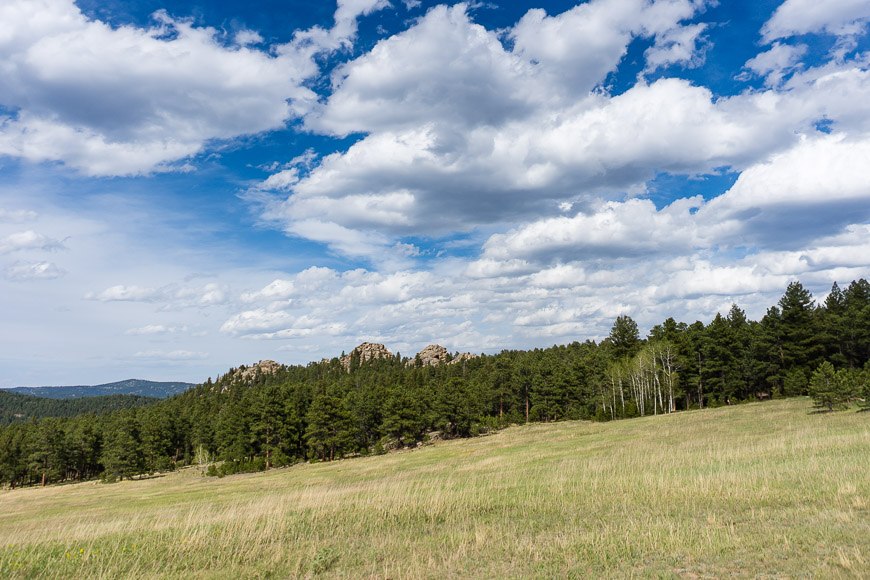
Sony A7 IV + Sigma 28-70mm f/2.8 DG DN | 1/4000 f/2.8 ISO 100

Sony A7 IV + Sigma 28-70mm f/2.8 DG DN | 1/1600 f/4 ISO 100
Alternatives to the Sigma 28-70mm lens
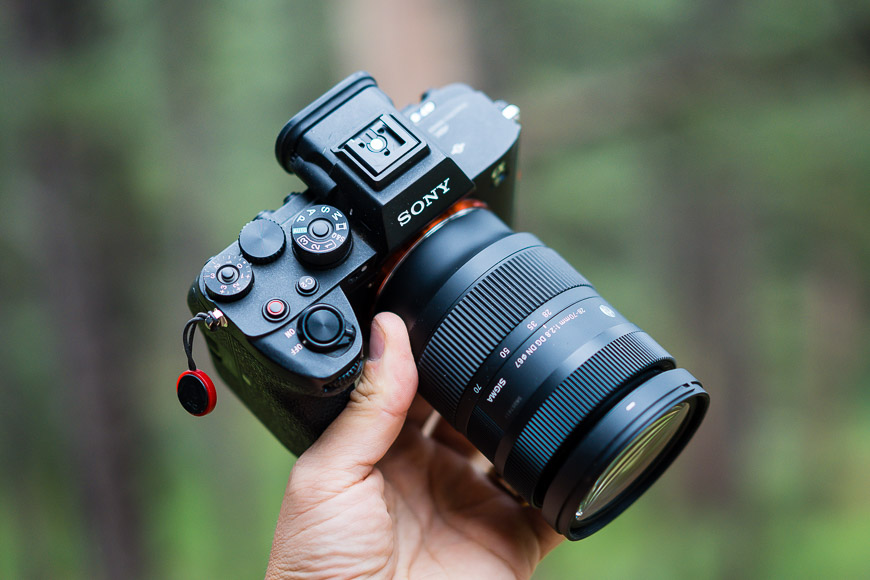
Sony A7S III with Sigma 28-70mm f/2.8 DG DN
When it comes to alternatives in this mid-range zoom lens class, you could consider the more expensive Sigma 24-70mm f/2.8. It’s around US$1,050 while the 28-70mm is around US$800. The Sigma 24-70 is a nice lens given that extra focal length, though it is also heavier.
Alternatively, you could look at the Tamron 28-75mm f/2.8. It’s priced comparatively at around US$830. For me, the reversed zoom and focus rings never felt right and the autofocus is meh.
If budget isn’t a concern and you can justify the price tag, there are higher-quality mid-range zoom lenses out there, such as the newer Sony 24-70mm f/2.8 GM II.
Otherwise, in this price range, the Sigma 28-70mm f/2.8 is a solid pick.
This and some other Sigma lenses also come in an L mount version for a Leica or Panasonic full frame camera, although I suspect the L mount performs nearly identically to the Sony mount.
Sony E mount bodies are so inexpensive it’s hard to picture getting a different version of this lens.
What are the best Sony e-mount lenses?
Value for Money
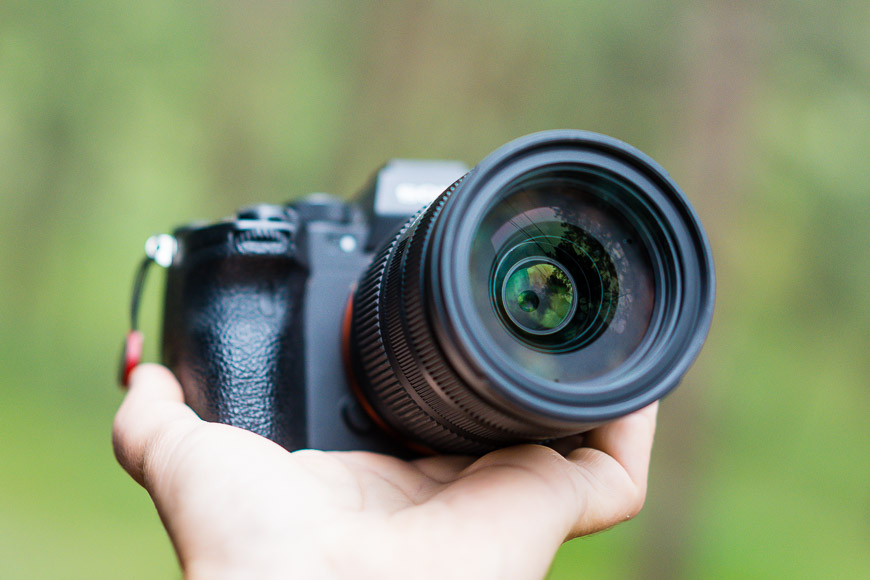
Sony A7S III with Sigma 28-70mm f/2.8 DG DN lens
For the $800 price tag, the Sigma 28-70mm f/2.8 is a versatile and solid lens. It’s not the pinnacle of performance but definitely a workhorse, and it’s realistically the best deal out there for a mid-range zoom if you don’t need the extra 4mm of the 24-70.
Essentially, I would say that this is a great introductory lens and way better than any kit lens you’ll get. It may not be the best lens on the market but I certainly don’t hesitate to rely on it.
Sometimes our attention to detail as photographers makes us extremely picky about things that many clients wouldn’t even notice or care about which is why it can be hard to justify a bigger price tag on a higher-quality lens when we’re trying to ensure profitability.
Gear isn’t always a simple matter of picking the best of the best, it can be a business decision too. And from a business perspective, an affordable, versatile, reliable lens that helps me accomplish what I need to accomplish while simplifying my work has a lot of value.
Sigma 28-70mm f/2.8 DG DN Review | Conclusion
I enjoy this lens. Generally, I am a big fan of primes but I went for this lens because it is so compact, lightweight, and versatile. If you read my reviews you’ll know I’m a sucker for compact and lightweight in general.
For video shoots, this lens is fast to work with instead of constantly changing lenses. I really liked the variety of shots you can get in a short period of time.
I especially like it for shooting weddings in tight spaces – it’s on a fast-paced but extremely long day where this lens really shines.
As a basic, compact zoom lens, the Sigma 28-70mm f/2.8 is a nice versatile option for getting the job done without breaking the bank.

Great value lens that's small, lightweight and a good all-around performer.







